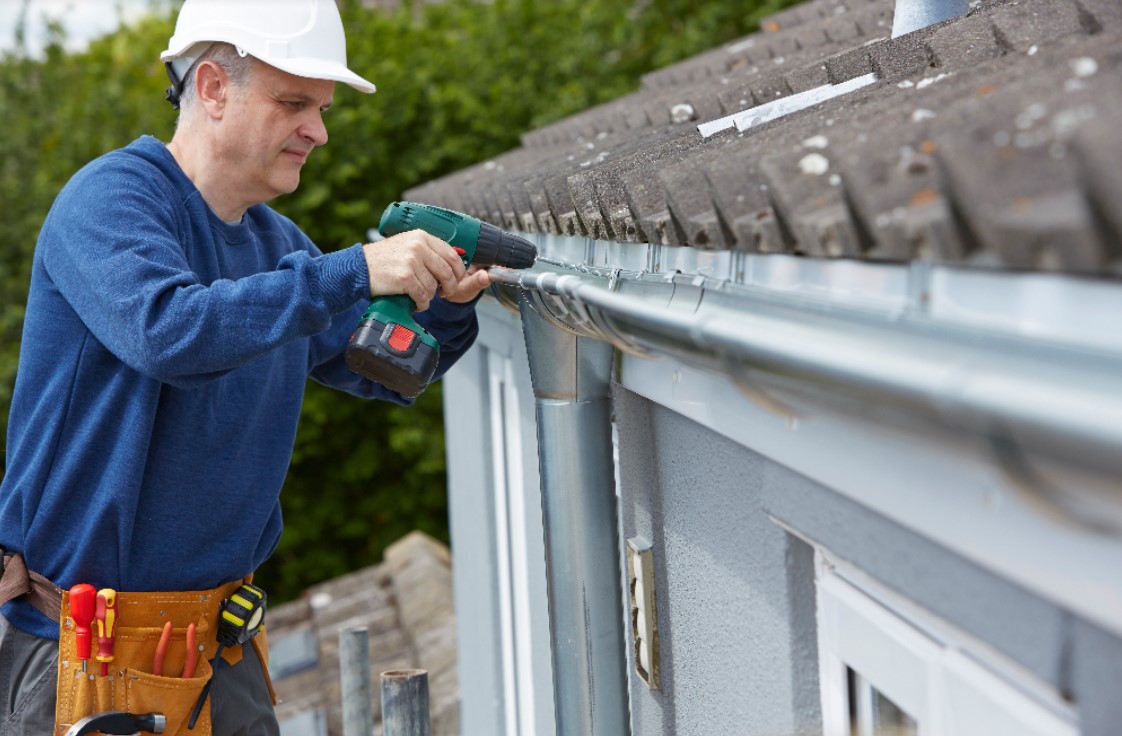
Most of us never notice the guttering along our roofline until there is a problem with it. One of the most noticeable problems is when the gutters start to sag. But what causes sagging gutters, and can they be fixed or are you looking at a full replacement? Below are the most common causes of sagging gutters:
Poor Installation
According to the experts at Global Gutter Systems, inadequate rain gutter installation is often the cause of sagging gutters. If the fascia brackets have been installed too far apart, the gutters do not have enough support, which makes them vulnerable to collapse should they be holding too much weight (such as during heavy snow or when rainwater freezes). The same issue can occur if the screws holding the brackets are not long enough and are not penetrating deep enough into the fascia.
Gutters are Too Small
The standard gutter size is five or six inches, but they are available in narrower or wider widths. In areas where there is a lot of rainfall or where heavy snowfall is common, the standard width may not be big enough, so wider gutters are recommended. Some people assume that because the area where they live does not get much rainfall that the narrowest gutters will suffice but in sudden heavy downpours, these small gutters may not be up to the job and can cause water to overflow or the gutters to sag under the weight.
Your Gutters Need to be Cleaned
If you do not look after your gutters, there is a high probability that they will end up being clogged with dirt and debris. Over time, this will cause problems such as sagging. Clogged gutters are not uncommon, but unless you clear the blockage water will begin to back up behind the clog, causing unnecessary weight in the gutters which will eventually start to pull them away from the fascia boards.
Your Gutters are Old and Damaged
Gutters do not last forever and if you have bought an older home, you might find that your gutters are beginning to sag purely down to old age and wear and tear. Most gutter materials are designed to last for a long time, but some will last longer than others. Some, like PVC and vinyl, are prone to cracking and warping, particularly during the freeze/thaw cycle in the winter. Metal gutters are better able to handle this, but they are more expensive and do need to be regularly maintained.
Can Sagging Gutters be Repaired?
If you take action as soon as you notice the gutters starting to sag, you may be able to repair rather than replace them. For example, if there is a blockage or if the brackets are too far apart, you can probably attend to this before the damage becomes too severe. Nevertheless, if the gutters are simply too narrow and are unable to handle the amount of water that they are dealing with, a full replacement is likely necessary. The same is true for old gutters that are worn and cracking.
Conclusion
Gutters are an intricate part of a home’s drainage systema and when they are working properly then they are not usually noticed. However, when there is a problem such as sagging, they can become unsightly and can cause other issues such as damp along the walls.
There are various causes of sagging gutters, including wear and tear, incorrect installation, and blockages. If you notice a problem, it is best to get a professional gutter installer to come and have a look rather than trying to fix the issue yourself.
